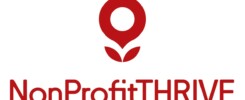
There are thousands of businesses building around an assumed customer need, investing millions, maybe even billions, of dollars in untested judgment calls. At the end of it all, they’d roll the product out — to great fanfare, again at great expense — and … nothing.
Crickets.
It wasn’t just large corporations that made this mistake, but it was their stories you’d hear because smaller businesses that fully invested in products whose interest hadn’t been adequately tested generally weren’t around long enough to become cautionary tales.
Enter lean methodology. This set of development principles traditionally associated with startup culture preaches a constant cycle of build-measure-learn. These principles minimize cost, maximize return and ensure that, by moving through multiple iterations of build-measure-learn, you end up with a product that truly reflects customer need because measurable customer need drove its development.
These same principles can be applied to many aspects of digital marketing. They are, in many ways, the foundational philosophy behind the rise of analytics. Today, I’m going to talk about how they can apply to the specialized, often maddening, intersection of paid search and social media.
Building campaigns to test your theories
Paid search and social are often treated as if they’re entirely separate channels. On the one hand, we have the high-intent, crowded-vertical world of pay-per-click search advertising. On the other, the low-intent, crowded-screen world of social media. What could they possibly have in common? You might ask the same question of computer modeling and old-fashioned weather forecasting, but, in both cases, each informs the other.
What this means for your digital-marketing campaigns is that, instead of viewing the channels as separate, view them as entwined. They are separate threads, coming together to make a unified whole.
Let’s say you use Google’s Keyword Planner to find recommended terms for your brand, but search volume is still lagging so they aren’t providing adequate return. Social is one way to drive search numbers; paid search organically increases interest, which drives social media mentions. This effect is even more pronounced when you create a unified brand — visually and in tone — so that, instead of coming off as different divisions of a corporation, your brand becomes a sort of personality, with a voice, a face, a relatable attitude.
Measure how your campaigns work across channels
One simple way to integrate the two channels is to use social media to gauge which headlines, terms or approaches seem to get the best response, then use that data to structure your pay-per-click strategy. Social media can be a valuable tool not only for creating demand, but how well it creates that demand can be used to measure interest. After all, generalized tools measure how users behave, but they might not accurately measure how your users behave.
That’s one of the key features of tools like Facebook Audience Insights, which offers deep, broad access to a variety of information about your audience, a tool that becomes more valuable the larger your audience grows. Until you have your own pool of active users to gather demographic and interest data from, how are you supposed to know what they like?
That’s precisely the question every startup asks itself and precisely the problem that lean methodology has evolved to address. There are myriad tools, strategies and models for measuring appeal — from cohort analysis to net promoter scores to real-time monitoring; which would best serve you and your brand depends not only on what sorts of behavior you’re attempting to measure but the core competencies of the people measuring it.
Learn which strategies work, abandon those that don’t
All strategies for measuring customer desire ultimately boil down to some version of split testing: Do customers like this strategy more or that one? Once you’ve answered that question enough times and revised your strategies to reflect what you’ve learned, you won’t have to worry about marketing to assumptions because your entire strategy will have been designed around measurable customer interests, desires and preferences.
Whether it’s using pay-per-click to drive social media shares — because you have a better idea of what people are searching for — or using organic social media traction to inform your paid LinkedIn advertising, the information, insights and data you collect from cross-channel marketing strategies are invaluable.
Ultimately, it all depends on your willingness to be flexible, attentive and follow the results wherever they lead. You’ll have to abandon assumptions, let go of exciting ideas, reckon with your own incorrect judgment a hundred times. But in the end, you’ll have positioned your brand for success by relying on the people you want to sell to and listening to what they want.


